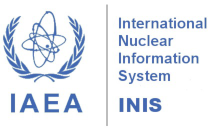New article published in 12(4A) - ENAN / INAC 2024
Synchrotron Microtomography to Explore the Anatomy of Insects
Abstract: Recent advancements in high intensity synchrotron sources have revolutionized the field of non-destructive imaging, particularly in biological sciences. Synchrotron radiation micro-computed tomography (SR-microCT) has emerged as a powerful tool for visualizing complex 3D structures, from dense materials to delicate biological specimens. This technique enables unprecedented spatial resolution, facilitating detailed analysis of sub-tissue structures within organisms without invasive procedures. Additionally, X-ray phase-contrast imaging (PCI) has enhanced the visibility of soft tissues by exploiting phase shifts, complementing traditional absorption-based methods. This paper highlights the capabilities of SR-PCI in biological research, demonstrating its application on millimeter-scale samples of Aedes aegypti mosquitos and Drosophila melanogaster fruit flies at prominent synchrotron facilities. Read full article.
Manufacturing of Physical Phantom and Evaluation of a Software for Automated and Remote Quality Control in Mammography Using a Retrofit DR System
Abstract: Mammography is crucial for the early detection of breast cancer, requiring periodic quality controls to ensure that images and patient exposure doses comply with regulatory limits. This study addresses the challenges involved in conducting quality control, such as the lack of qualified personnel and the subjectivity of daily evaluations with phantoms. Additionally, the research proposes the incorporation of automated and remote quality control tools. In this context, a simple phantom was developed by the IAEA using materials such as copper, acrylic, and aluminum, to be used with the Automated Tool for Image Analysis (ATIA) software. This software performs automatic image analyses, extracting data from the DICOM header and exporting it to a CSV file for analysis in Excel® spreadsheets. The objectives of this work were: (a) to manufacture the phantom according to the standard model from the IAEA Human Health Series No. 39 publication; (b) to apply the ATIA software in the daily monitoring of a mammography unit and the digital radiography (DR) image receptor retrofitted to an analog mammography unit at the Laboratory of Radioprotection Applied to Mammography (LARAM) of CDTN; (c) to evaluate and compare the responses obtained between the automated ATIA software and the manual IMAGEJ software. The results demonstrated the stability and consistency of the mammography system in metrics such as SDNR and SNR, essential for ensuring image quality. However, variabilities in horizontal and vertical MTF at lower spatial frequencies indicate discrepancies in resolving fine details. The detectability index (D') stood out for its high consistency, indicating the reliability of the mammography system in detecting small details. Thus, it can be inferred that significant differences between quality control software in various metrics highlight the importance of careful software selection to meet specific mammographic evaluation needs. Read full article.






















